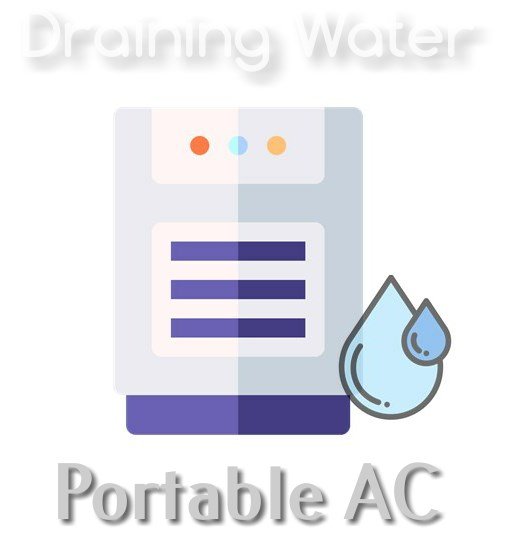Draining water from portable air conditioners might be familiar for those with a portable AC unit. How can you do the drainage yourself and how often should you do it? Keep on reading for the quick guide we made for you!
Draining Water from Portable Air Conditioner
This movable yet small air conditioner unit seems to have low maintenance or even none at all. In fact, you still need to do the drainage on some unit that doesn’t come with self-evaporation technology.
If you’re lucky, you will get those portable AC units that can release the collected waters from your room automatically. But if you’re not, you will have to drain the water from your unit manually.
Why Portable Air Conditioner Needs To be Drained?
We know that you think choosing a portable air conditioner unit comes in handy and is low maintenance. But, that doesn’t mean no maintenance at all.
Every portable AC unit has a water reservoir on the back because it collects the moisture out of the air. The amount of water collected depends on the humidity levels inside your home and the area you live in.
Most of the portable air conditioners could evaporate the collected water. But, the company of your unit still provides you a water tray just in case the water can’t be evaporated at the same quantity as it is collected. Therefore, you need to do the drainage regularly to avoid the water being overflowed and creating a leakage site on the unit.
How to Drain Water from Portable Air Conditioner
Using a Pan
Draining water from the portable air conditioner can be done by using a pan. Locate the drainage part first, then put the pan underneath them directly. It’s much safer to prepare the pan as the water will splatter in seconds and things will get messy.

Once you have done this, you can unplug the AC unit first to remove all its power. Wait until you have completely drained the water and plug the unit back in.
Using a Hose
Check if your unit comes with a hose. If so, you may read and follow the user’s guide manual on how to use this. It would be easier to put your portable air conditioning unit in a basement as the water will go downhill.
A simple hack, you can use a standard hose like the ones you use for gardening if your unit didn’t come with a drain hose. You may purchase some screw hose clamps to prevent any possible leaks.
Using a Condensate Pump
This method is the easiest yet the most convenient as it could work in any type of surface or angle. Once the water has reached the level of the pump, it would push the water automatically. When a certain level of water has drained, it will turn its pump’s system off.
How Often Should I Drain My Portable Air Conditioner?
Speaking of frequency, it relies on the models of your portable air conditioner unit. Your unit’s drain port size will also determine how often you have to drain them.
Some can operate for weeks or even months without having to do the drainage. Yet, other models will force you to drain the unit every 8 hours. This will also depend on how the unit reacts to the weather.
If the area you live in is ridiculously too hot, then draining water from a portable air conditioner might be your daily or weekly routine. The higher the humidity levels, the more complex the unit has to work. This situation can result in higher condensation rates produced by the portable air conditioner unit.
In short, most AC unit force the user in draining water from portable air conditioners very often. To avoid any leakage or damage, you will need to check the region you live in before choosing the suitable portable AC unit for your home.
Keep in mind that high humidity levels determine the quantity of accumulated water. If you live in high humidity weather, you might consider purchasing a drain hose to make the unit drain out automatically.
So, which tips you find helpful in draining water from your portable air conditioner?


